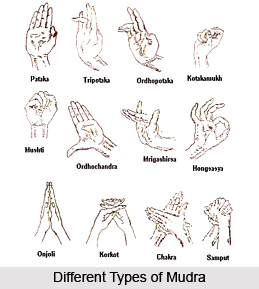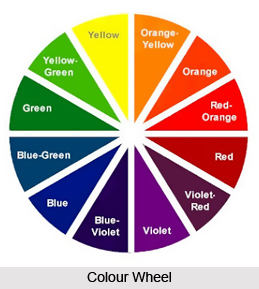 Mudra or seal sign in Sanskrit helps to bring a change in mental attitude, intention and enhance powers of divinities. As colours influence human minds and lives on every level. However the colours also influence moods and every type of mental activity. Mudra vigyan has been associated with various Colours. Mudra and colour thus forms a unique combination and stimulates positive energy in the body, mind and soul of a human being. Different shades of Colours are specifically applied to regenerate the organs and glands, as well as to activate the processes of elimination, respiration, and circulation in the body.
Mudra or seal sign in Sanskrit helps to bring a change in mental attitude, intention and enhance powers of divinities. As colours influence human minds and lives on every level. However the colours also influence moods and every type of mental activity. Mudra vigyan has been associated with various Colours. Mudra and colour thus forms a unique combination and stimulates positive energy in the body, mind and soul of a human being. Different shades of Colours are specifically applied to regenerate the organs and glands, as well as to activate the processes of elimination, respiration, and circulation in the body.
In Mudra , all the colours are given equal prominent status. The colours have different stimulation and each colour works in different directions of the body.
• Red
The interrelation of mudra and color can be best understood with the color red. It stimulates circulation, makes one alert and supports one to relax. Red has a warm effect and also brings out aggression.
• Orange
Mudra and Colours improves the mood. The colour orange promotes lightness, but can also stimulate superficiality in the body
• Yellow
Yellow is among the Mudra and Colours that stimulates digestion, makes one mentally alert, and lets life appear in a bright light, but it can also be obtrusive. A variation of yellow, lemon yellow is considered to be a mental colour. But the creamy yellow is a spiritually mental color. Creamy yellow is the connection to the Divine Consciousness.
• Green
Green is the colour among the Mudra and Colours that calms a mind. It regenerates on every level, and gives the body the desire to start afresh. Emerald green colour is the healing color and balancing color. In the relationship between the Earth and the heavens this is the balance point between existence on the Earth and existence in Heaven.

• Blue
Blue is the colour of calming, and this calmness goes deeper and provides a sense of security. Mudra and Colours conveys protection, and symbolizes the silent yearning for the transformation.
• Violet
Mudra and colour is interrelated. The colour Violet is the color of transformation and change. Violet also brings spirituality.
• Brown
Brown is the colour of stability and connection to the earth. Mudra and color theory holds brown color as the shade responsible to increase stability in the human body.
• White
White bears the entire spectrum of the other colors within itself. It contains birth and death and is indeed a vital element in the theory of Mudra and colour.
• Black
Black is the colour of protection and of gathering strength as well as retreat. Mudra and colours gives importance to Black as the colour bears emptiness in abundance. However, too much use of black weakens the organism as well as promotes pessimism thus the colour should be used in a balance.
Every colour can be seen in the aura or energy body. Colours practised with Mudra have an effect on the general feeling of well-being. The course of an illness can also be reversed with the help of colours. When a person prefers a certain colour, it is needed that he must also possess the corresponding qualities.
While holding a mudra, one can either visualize a colour or concentrate on the colour of an object. When one visualizes a colour, it comes to life. It is said that one can imagine the colour as dark or light, dull or bright, connected to forms or flowing. Moreover, it is said that one can imagine a forest which is best to regenerate oneself. The visualization of the colours refreshes a person inwardly. Such visualizations are used as healing processes.




















